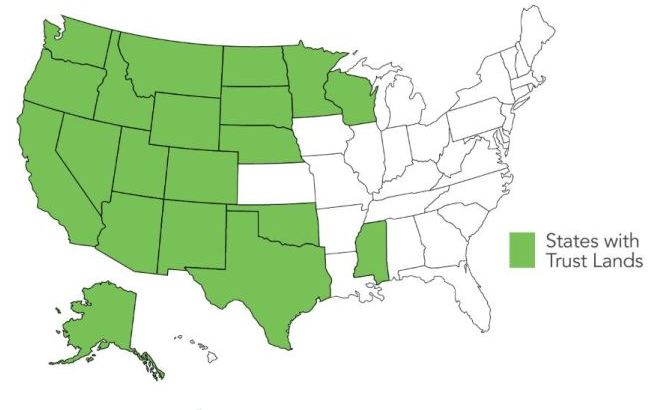State Affiliates

Some US states elect land commissioners in a state-wide election. In other states, commissioners are appointed by a Board or the governor.
The permanent funds associated with trust lands are also managed differently. In some states, the money is managed within the land office. In Texas, the responsibility lies within the state board of education. In most states, the state treasurer invests the fund, sometimes with and sometimes without an advisory committee.
Resources available on the granted lands vary widely. Some US states make the majority of their revenue from forestry, while others generate most of their annual revenue from oil and gas.
Every US state generates revenue from grazing, but the percentage of the overall trust land revenue made from grazing varies substantially from state to state.
The flow of funding from the land to schools is unique for every US state. A few states save all that is earned minus the expenses of land management. That state's schools then receive the annual interest and dividends made on the fund.
Other states distribute the “renewable resource revenue” directly to their schools in addition to interest and dividends from the permanent fund.
State by State Comparisons
School trusts vary significantly for a variety of reasons. The original land grants were different from state to state. Some states received two or four sections in each 36 square mile township instead of one.
The comparisons discussed here are provided as a point to begin discussion. Every trust is different, and every state has something others can learn from.
Over the years, land commissioners have continually learned and implemented new ideas from their sister states, improving what they already do well.
20 Participating States
Each of these US states (shown in green) retains a trust for public schools. Each state trust is different, beginning with the original land grants, the geographical location, and the land’s resources.
Click the map to find out more about each state.


Rates of Return
In this chart, you can see a comparison of 20 different U.S. states and their rates of return on school trust lands. How the states choose to manage their trust lands can greatly affect the revenue generated for their permanent school fund. Advocates for School Trust Lands believes in, and can help with, the prudent and profitable management of school trust lands and funds.
